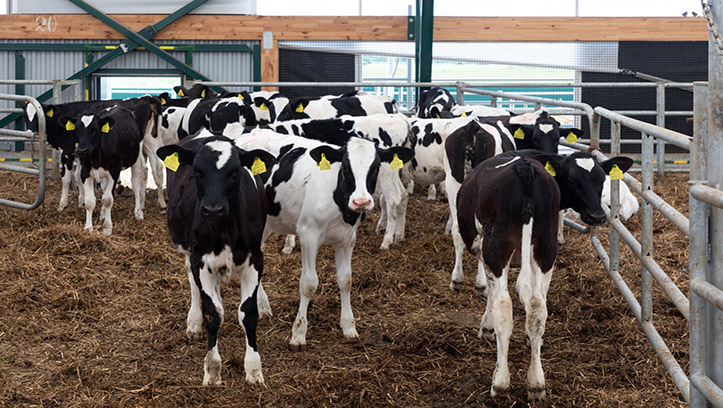“The first 90 days of a calf’s life are vital for future performance. Ensuring calves are well managed and well fed will play a vital role in hitting heifer rearing targets,” said Charlotte Ward, KW Feeds ruminant technical manager.
“Maximising growth in the first months of life is critical to reducing overall heifer rearing costs.”
Calves convert feed into growth most efficiently when young, so putting extra effort into colostrum feeding and management, using a good quality milk replacer and encouraging early intakes of calf starter can mean less ‘catch-up’ growth is necessary when calves finally go out to grass.
Ms Ward provides the following pointers to help maximise the future milking herd’s potential.
Colostrum
Colostrum is the most valuable nutrient for new-born calves, it contains high energy levels, growth promotors, vitamins, and immunoglobulin, which are vital for protection against disease. Colostrum has 60 times more antibodies than normal milk!
- Quality – Test for colostrum quality using a Brix refractometer. Colostrum quality target should be greater than 50g IgG/L so aim for a Brix reading of more than 21 or 22%
- Quantity – 10% of bodyweight within the first 2 hours of life. 4-6 litres within the first 24 hours
- Quickly – Feed as soon as possible after birth and within the first 6 hours. This will ensure highest absorption of antibodies as this reduces rapidly over the first 24 hours of life
- Quietly – Minimise stress to ensure efficient absorption of antibodies
- Hygiene – Contamination must be avoided at all stages
Feeding
Calf milk replacer
Calves need to be fed a minimum of twice a day from birth until one week before weaning, while the volume and number of feeds can be reduced as part of a step-down weaning process.
- Select a good quality milk replacer ensuring a high nutrient density;
- Milk replacers are often fed at a concentration of 12.5% dry matter, similar to cow’s milk. To achieve this concentration milk replacer should be mixed at 125g of powder to 875ml of water;
- Understanding concentrations is important to ensure targets are met, milk replacer can be fed at concentrations ranging from 10-20% dry matter depending on the system and growth rates required;
- Mixing of milk replacer needs to be done correctly and presented to the calves in a consistent manner to reduce stress and nutritional scours; and
- In colder weather, maintenance requirements for energy will be greater. Consider feeding more milk replacer, at the same concentration, to supply extra energy.
Starter feed, water and forage
- A good quality starter feed, forage and clean water should be offered from day 3;
- These should be supplied ad-libitum to kick-start early rumen development;
- Weaning should only commence once calves are eating 1.5-2kg of starter feed for 3 consecutive days;
- Forage offered should be clean, fresh and chopped with straw being preferable over long, green, tasty hay which can lead to pot-bellied calves; and
- It is important to monitor growth rates regularly and adjust feeding schedules as necessary.
Calf housing & hygiene
- A clean, comfortable, well-ventilated environment and good hygiene are very important for successful calf rearing;
- Ensure adequate space per calf;
- Housing should be dry, draught-free and well-ventilated;
- The area should be bedded down regularly especially vital during periods of cold, wet weather;
- Provide a wet area for fresh, clean water and starter feed;
- Attention to temperature – in very cold weather consider the use of calf jackets;
- Dip navels after birth;
- Ensure hygiene procedures are in place for calf building, feeding equipment and staff; and
- Calves should be observed on a regular basis, so any signs of ill health are spotted quickly
“Investing in the milking cows of the future will help maximise potential lifetime milk production,” concludes Ms Ward.


